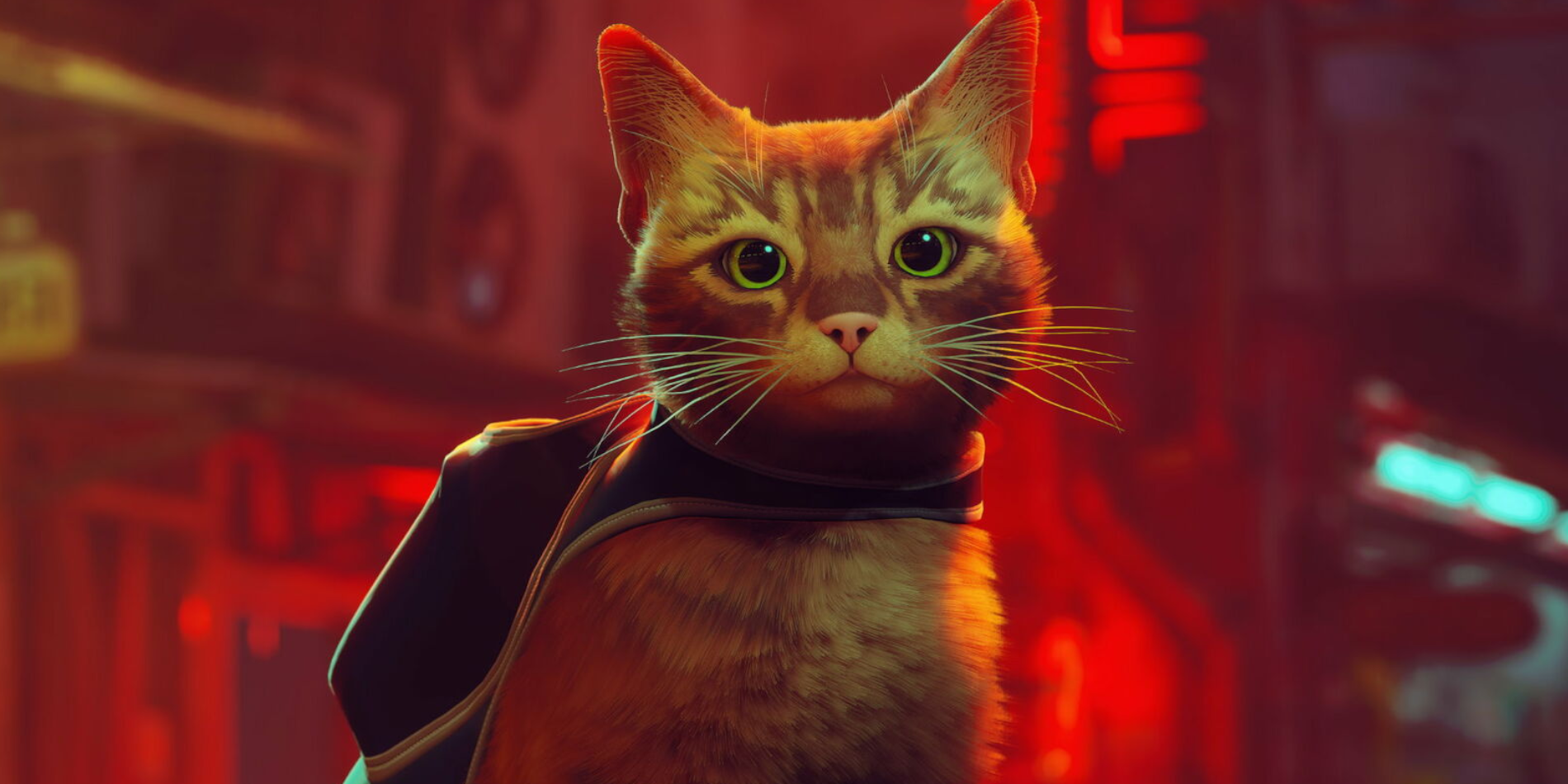
Small Spoiler Warning: This will contain some very minor spoilers for Stray.
I’m obsessed with Stray. If you’ve not heard about it yet, Stray is an adventure game developed by BlueTwelve Studio that recently launched on PlayStation and PC. The game has players explore a desolate, human-free cyberpunk world, solving puzzles, and learning why the world is how it is.
However, what sets Stray apart from other games is the player character. Rather than casting you as an action hero or a cyborg Stray puts you in the tiny fluffy shoes of a cat.
A regular cat.
A real-world-sized cat.
It also has a dedicated meow button. So basically, it’s the game of the decade.
But one of the best things about Stray is how it uses the protagonist’s size to immerse the player in the setting and recontextualize the environment.
Stray’s environment design is top-notch. The areas you explore feel futuristic and different from our current world while still feeling lived in. Everywhere feels like it has a purpose and a reason for existing within the world. At a glance, you can get a good idea of what function each room or area would have served when it was in use, making it instantly relatable. You can easily imagine using these spaces, wandering the streets, exploring the markets, and living in the small apartments that populate the map.
This is something that many cyberpunk settings struggle with, often leading to them feeling like neon-clad boxes with cutscene triggers and random geometric shapes scattered about.
What makes this even better is that Stray’s developers didn’t just build a fantastic world and call it a day. They also perfectly integrated the game’s mechanics and environments. They also use the cat’s small stature to immerse the player in the world and story in a very naturalistic way. They give you plenty of fun ways to interact with the setting and force you to think outside the (litter) box to get from A to B. This turns generic rooms into fascinating puzzles that force you to use desks, tables, crates, and shelves in unique ways to get to your destination.
Tweaking the character’s size forces players to look at the environment in a new way, and this can help draw them into the setting more, making them think deeply about objects they would usually overlook. A generic box people would usually ignore becomes a room’s focal point as it becomes a vital part of your platforming route. A simple shelf you could just grab something from becomes a puzzle as you have to find a way to reach it and retrieve the object you want.
It also makes you realize how slight design changes can totally transform objects. For instance, a tall table might be totally unreachable. But one with slanted legs or a low support beam suddenly becomes a navigatable surface, making you reconsider every object you mindlessly use without a second thought.
Stray is a game that made me think about shelves in a new way, especially how a slight change in form or position turns a shelf from a commonly used storage surface to a rarely touched one, only used for long-term display, which is something I didn’t see coming, even if I adored it.
And because of this immersion, you end up noticing more of the world’s tinier details and thinking about how these objects fit into the larger environment. Wondering just what these objects were used for when the area was populated. And what they were last used for before the humans all vanished. It reminds me of coming home after being on vacation for a week or two. While you still recognize the rooms, you spot details or quirks that had long faded into the general background noise of your day-to-day life.
Not every game can feature a cat protagonist (even though they should) but spending time thinking about how differently sized beings would navigate a space is something that more developers should do. As it allows you to recontextualize the environment and see things you would usually miss. And this lets you create better locations and have a greater understanding of why your environments are how they are, which leads to them feeling much more realistic and lived in, which helps deeply immerse the players in the setting.
This is especially true for tabletop games, as players can use these small details in unexpected and unique ways due to the added freedom the medium allows. And, by thinking about your environments from this angle, GMs can prepare for these moments. While also being able to lay the groundwork for them during session planning. This leads to your settings becoming both more vibrant and more memorable.
But, if you take one thing away from this, it should be that all games need a dedicated meow button.
Jonathon Greenall is a freelance writer, artist, and tabletop roleplaying game designer who has written for CBR, Polygon, Nintendo Life, Gayley Dreadful, Enbylife, and many other publications. They have also published several popular and highly-praised tabletop roleplaying games including “You Have One Ability….The Ability To Fuck This Up,” “Macarons, Milkshakes, And Magic,” and “Wander Wizards.”
Jonathon has always been fascinated by media, from the big hitters to the small, obscure, and often overlooked titles that linger on the sidelines, capturing both the on and off-camera stories that make these shows so fascinating.
Jonathon is also a major anime fan, having been exposed to the medium through shows like Sailor Moon and Revolutionary Girl Utena. Since then, Jonathon has maintained a passion for anime, watching most new shows each season and hunting down overlooked gems from previous ones.

